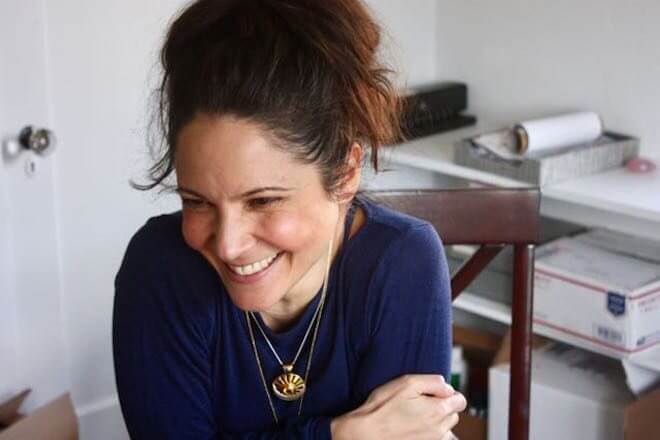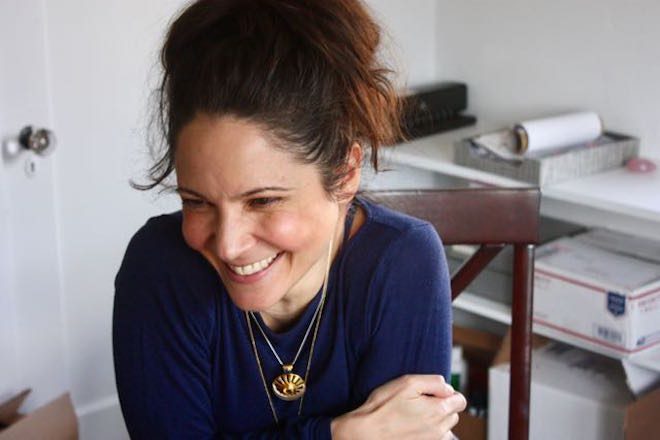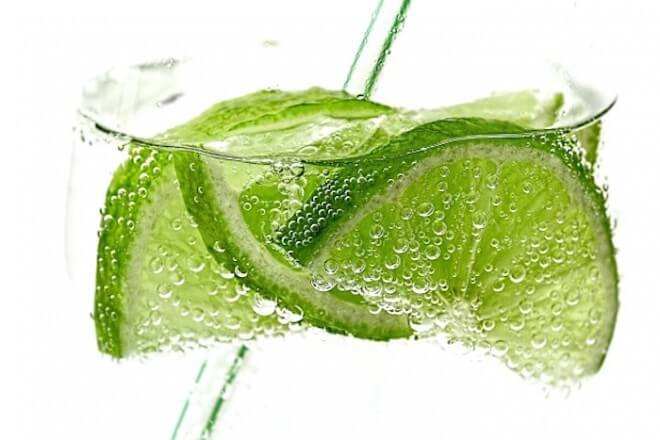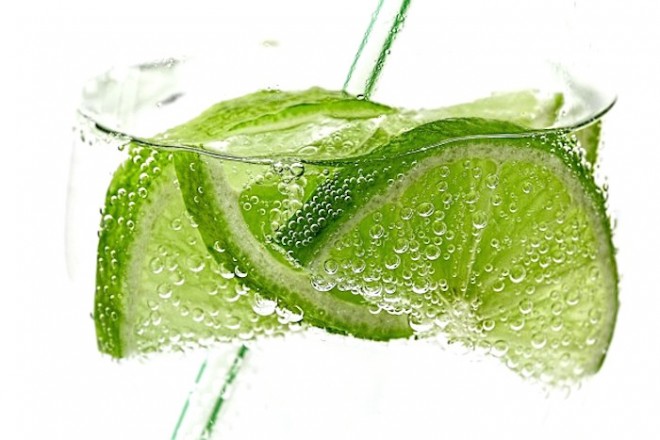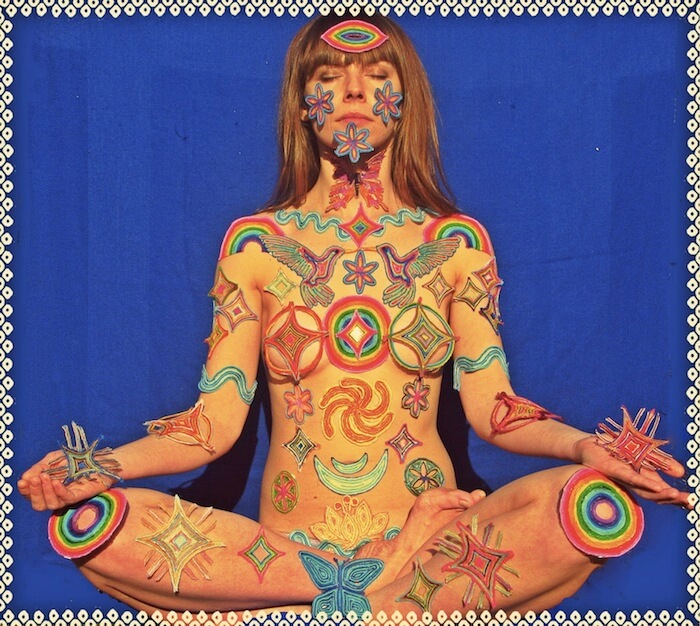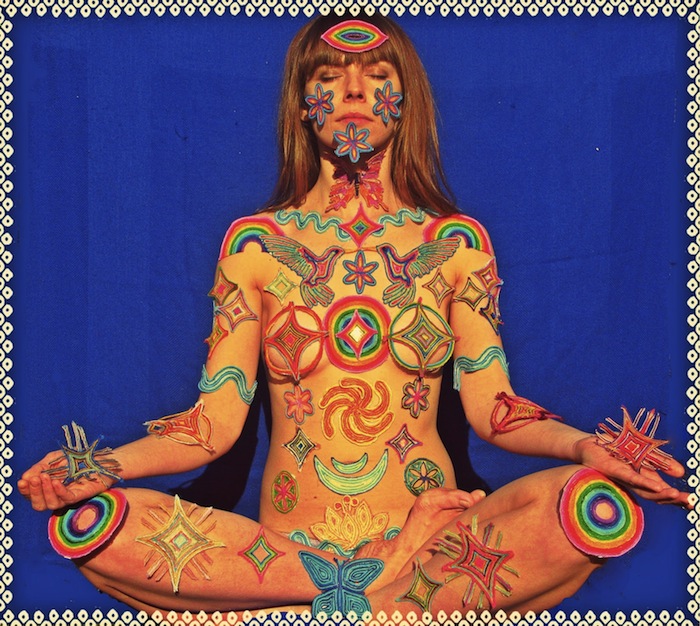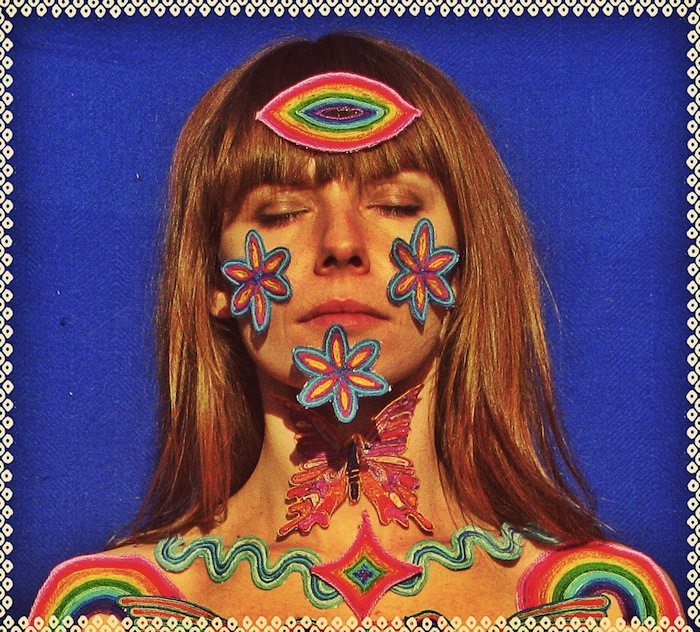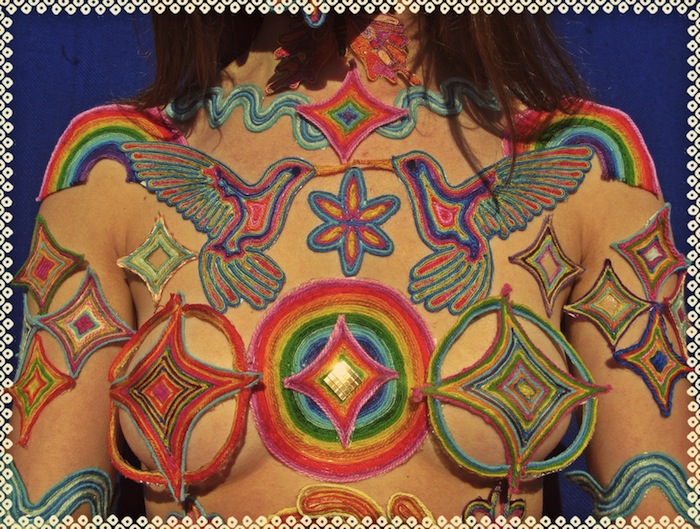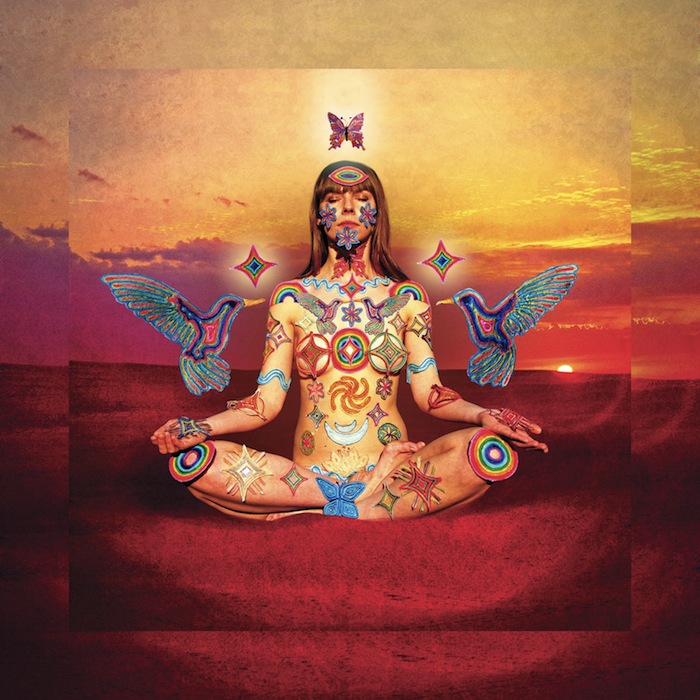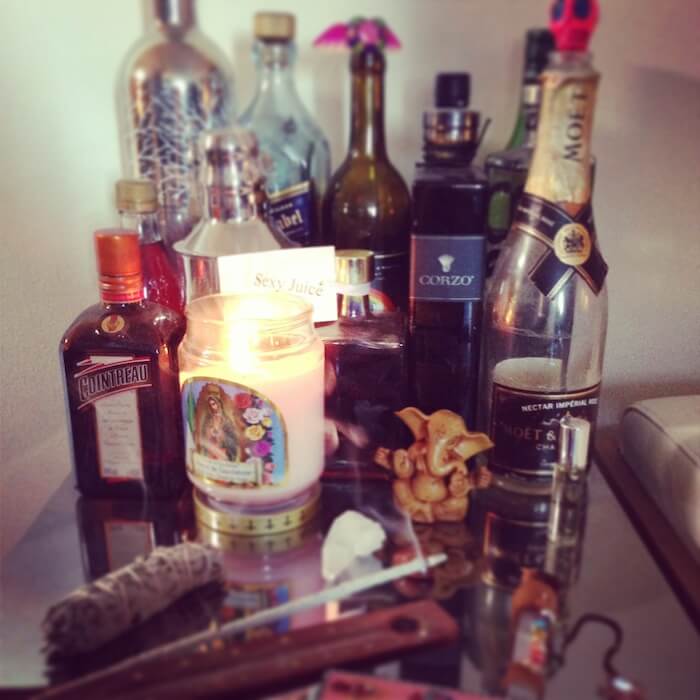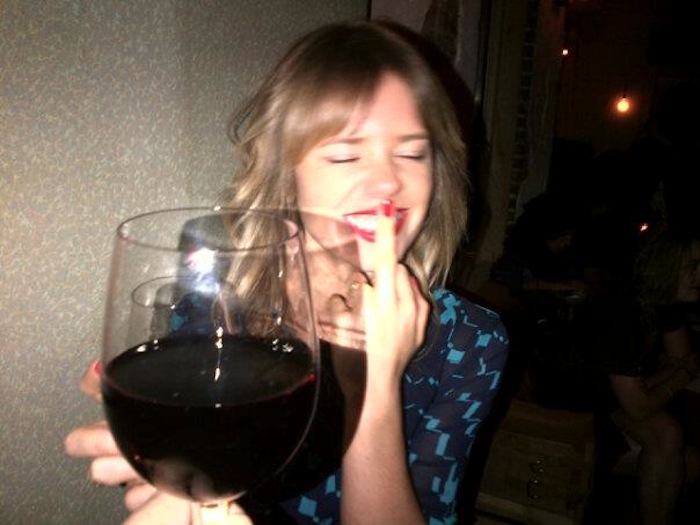Want to have Divine on speed dial? In her latest Holy F*ck column, Alexandra Roxo reveals that experiencing ecstasy is the key to strengthening our channel …
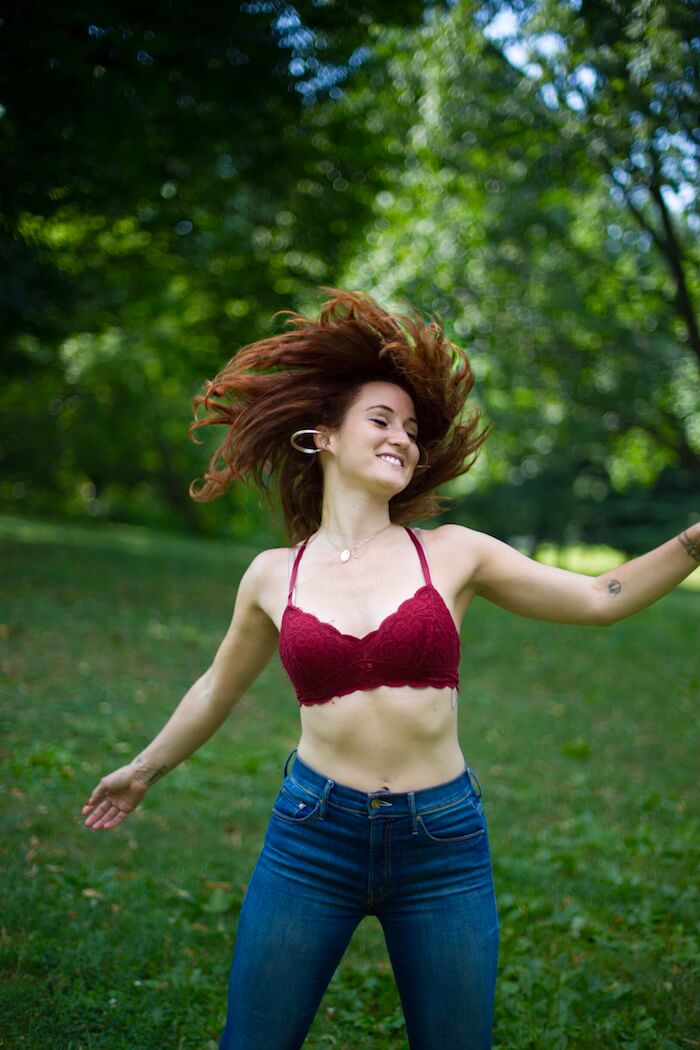
People have been seeking ecstasy for a long time. Whether it’s through herbs and psychoactive and psychedelic substances, or through ritual, prayer, meditation, fasting, sleep deprivation, pain, sex, and extreme temperature baths, most cultures have rituals and celebrations that invoke deeply ecstatic states.
From Greek rituals involving mind-altering substances, to the Sufis’ dance into ecstatic bliss, and the tantrikas’ journey into oceans of “samadhi” (ecstatic union with God/Goddess), religious texts usually speak of this search. In Norse mythology, the berserkers would enter into an altered state to be able to fight. And even animals have sought out herbs and fermentation that brought about some sort of consciousness shift.
These exercises can allll produce states of BLISS that allow the participant to commune with “God” or the Divine. And, well, who wouldn’t want that?
I’ll tell you who! A culture that DOES NOT want its people to be empowered to know the Divine on our own terms. That would prefer us to have to pay into the Divine via tithing (offerings), and bow to the leaders of a church. This being one of the epic reasons WHY ecstatic states became stigmatized in the U.S., specifically, and in the Western world in general.
Personally, I blame the Puritans for labelling seeking ecstatic states as scary, transgressive, or somehow shameful. If people, and women especially, had the Goddess on speed dial, than what would they need the church for?!! SO, they got the ax. Or rather, in the case of the Witch trials, when women would dance themselves into states of ecstasy, the noose.
///
What exactly is an “ecstatic” experience?
In my terms, it is an experience that overrides the default mindset, the internal and external conditioning, and allows for a mind/body/spirit connection that transcends the normal, the typical, and the everyday.
This can result in waves of bliss, with senses ablaze and alive, heart open to a massive flow of love. Where the normal perception and experience of reality is transcended and expanded into a massively blissful, joyful, and loving one that shakes you at the core.
I’ve been exploring this for many years. At age 12, I was attempting to speak in tongues and faint on the floor at Baptist Church camp. And I experienced my first waves of sexual ecstasy around the same time. Since then, I’ve experimented with meditation, prayer, fasting, ritual, dance, song, pain, sex, and psychedelics. Each produces a different type of ecstasy.
Now, I take other people on journeys in my work through ecstatic states that can reframe and contextualize trauma, release stored emotions, and promote a deeper connection to self. Within a safe space, this process of finding ecstatic states can be very, very healing.
///
A dating app for ecstasy?
I am drawn like a fly on honey to people who know and experience ecstatic states without drugs.
A few years ago, I met two men who had participated in the Sundance ceremony, which involved piercings on the chest, and days of dancing and fasting. To me, these were the HOTTEST men alive! “Um, you spent multiple days with flesh wounds on your chest while fasting and dancing and singing, in the name of uniting with Divine energy and helping save the Earth?! Sign me up!!!”
There is nothing sexier to me than someone who sees and understands the value of finding ecstatic states on the regular without having to pop a pill. Someone so adept at meditation that turning their body to light is NBD. If there was a dating app for this category of human, it would make my life a lot easier!
It’s not Burner vibes. It’s not adventures with psychedelics. I’m talking about people with a thirst for ecstasy that comes from wanting to know the Divine. Wanting to know love. From a remembrance of a state that your soul knows, and longs for.
Anybody else with me on this one?
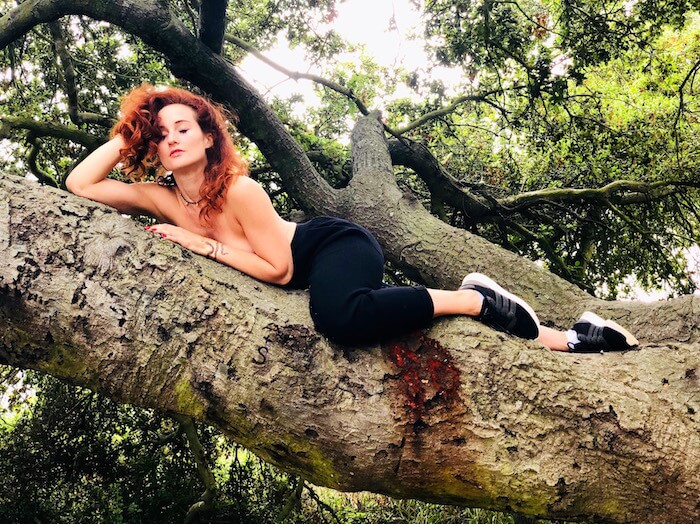
///
5 paths towards ecstasy for the Modern Spiritual Human
**A disclaimer: When you enter into ecstasy, you are opening yourself up massively, so you want to allow for this shift in your reality, perception, and internal state to happen in a safe setting. If you enter into an ecstatic state in a train station for instance, you could get taken away to a mental institution. So set and setting are key! You want be in a safe space. Surrounded by people you trust. Or alone. Remember you are opening ALL the channels and you want to do this with care. Especially if you are new to it.
1// Start simply. If you want to start safely, you can explore ecstatic states through something simple like chanting or ecstatic dance. Many cities have “Ecstatic Dance” communities and classes. Places with DJs and it’s sober and you just shake it out.
If you’re a yogi, chanting mantras in Kirtan could produce these states. You can seek a Bhakti yoga practice. Many cultures and religions have their own styles of song, and some may take you into ecstasy. Some not. When I used to go to the Agape Church in LA, their gospel choir had me in tears and I sang and danced til I lost myself.
///
2// Explore your blocks.
Because it can take years to release your default programming and open to the ecstasy available through song and dance, many people reach for a psychedelic or drug—because it offers a quick way in! But that also means it may have the most emotional, spiritual, and physical hangover, since you are literally stretching into an expanded state very quickly, flooding your body, and then snapping out fast.
You can micro dose different plant medicines if you want to go slowly. But beware; before you are granted ecstasy, you will likely first be shown any blocks you have to ecstasy! If you take MDMA, for instance, you may be opened quickly, but will likely be asked to deal with some spiritual and mystical pain the day after from that flood of chemicals and expansion, and the ensuing lack thereof.
///
3// Ease in with meditation.
It may take years before you get to ecstasy this way, but it will happen. Trust me! I’ve been meditating for 15 years and it happens often now. I feel like I am being made love to by an invisible force (consensual of course!) and it is amazing.
If you want to reach ecstatic states in meditation and not wait 10 years, you can try White Tantra or a Vipassana retreat. Both are in-depth practices and you’re likely to access ecstasy faster. But no guarantees of course!
///
4// Get it on (consciously).
If you establish trust, a deep connection, and emotional and physical safety, you can achieve insane ecstatic states with sex. Again though, if you open too fast, without a safe container and the spiritual and emotional components, you will suffer the repercussions. Chances are, you will feel depressed, anxious and shitty for days after. Perhaps you will feel guilt and shame as well.
Conscious BDSM is an amazing way into ecstasy in a safe space. Set the intention to open to the Divine before you begin. Japanese rope bondage and suspension work in particular has taken me to great heights of ecstasy, and I led two retreats last year that took women into that space for transcendence, ecstasy, and healing.
Pain can be a tried and true portal to ecstasy. Again, within a safe container, an intense consensual pain session with spanking or flogging or whipping or caning can produce deep and ecstatic bliss. Some religious sects also used pain as a portal to divine and ecstatic bliss. Light spankings are a safe place to start!
You can also start a self-pleasure practice that opens you to ecstasy. It will take time. Practice. A safe space so you can let go and scream and cry and release. At dinner the other night with my two besties, I was talking about my magical rose quartz wand and the orgasmic bliss I have with it, and their jaws dropped. It’s profound!

///
5// Remember that integration is KEY.
Integration means the time you take in between practices to process, rest, release, and allow your system to recalibrate. If you mix drugs and sex and pain and all of it you may go into wild ecstasy, but have a “WTF did I just do?!” the next day, feeling like you got hit by a train.
Unless you have stretched yourself internally to hold some levels of ecstasy over time, you will fuck with yourself psychologically, spiritually, emotionally and physically if you rush things. Seriously. I’ve learned this the hard way.
If you don’t have the skills or tools to integrate ecstatic experience into your life, you can blow a fuse, go back to exactly where you were before, or contract even smaller. But if you integrate your experience fully, you can allow the ecstatic experience to expand you. And you can STAY expanded, therefore experiencing levels of ecstasy OFTEN.
Begin by simply noticing when you feel ECSTATIC and take note. Breathe it in. Don’t zip by. As you notice, your capacity will grow. As you practice, you will stretch into holding more.
Rest. Be gentle on you. You’re re-teaching your system that’s its safe to feel this good. After centuries of being told that IT IS NOT. Write. Journal. Take salt baths.
Start slowly, but be diligent and don’t give up on finding this KEY and GIFT to your human system!!
///
Stay tuned for more Holy F*ck from Alexandra. Over the next few months, she will be interviewing women who learned how to access deep healing and ecstatic states during her yearlong program. Learn more about Alexandra and her work HERE.

